VA1MMA Wireless Room
If you would like more information about the Maritime Museum of the Atlantic wireless room, please contact:
Gord Young, VE1GY
902-489-9289
gngyoung@gmail.com
It is a great way to showcase CW and educate the public on our great hobby and skills.
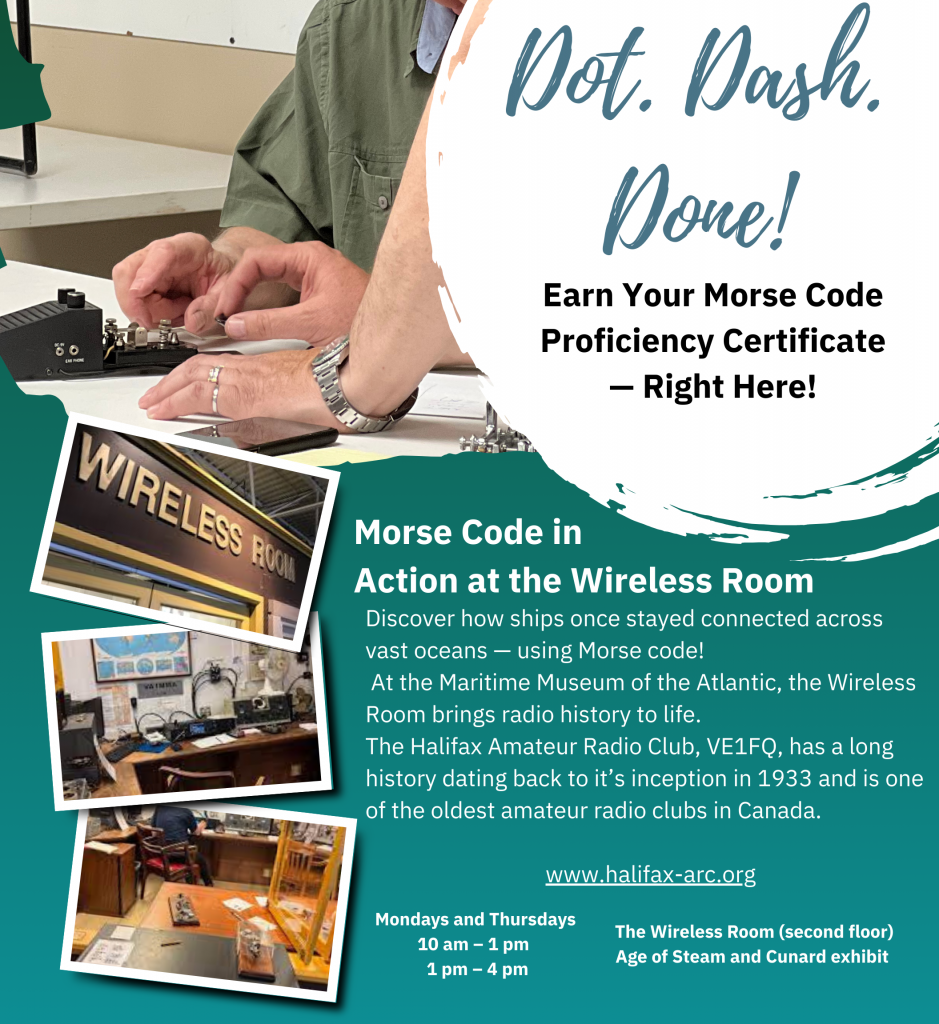
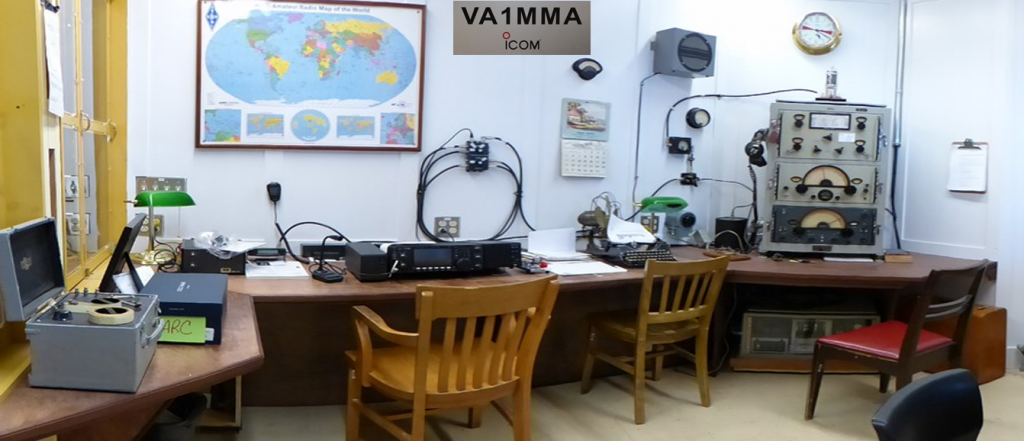
The Wireless Room within the Age of Steam exhibit at the Maritime Museum of the Atlantic has been created by the museum in partnership with the Halifax Amateur Radio Club (HARC). The room provides a visual demonstration of how ships communicated with one another and with shore stations after the advent of radio communications. Prior to the invention of radio, the primary method of communications at sea was by means of signaling flags or lamps but they were only effective over short distances, i.e. line-of-sight.
Once radio became available, ships were not only able to communicate over long distances and during inclement weather, but were also able to use radio direction finding to accurately determine their position. The wide use of radio communications after 1900 led to a dramatic decline in the losses of ships and crew. Thus the radio room became a central part of operating a ship.
The primary mode of communications was Morse code which employs a series of short signals, or dots, and longer signals, or dashes. Each letter, number and punctuation sign has its own unique combination of dots and dashes. A text message was then sent as a properly sequenced set of dots and dashes to the distant radio operator. Radio operators required great skill to send and receive messages at speeds of 30 words per minute or more. Morse code was the primary mode of radio communications at sea throughout the 20th century and until satellite communications became available.
Amateur radio operators throughout the world continue to maintain their communications skills at a very high level, including the use of Morse code as well as various voice and digital modes. Their skills in conducting clear and varied modes of communications is a cornerstone the hobby of amateur radio and is an invaluable skill during any emergency situation, especially those natural or man-made disasters when normal commercial communications fail. Morse code remains a very reliable and robust mode of communications.
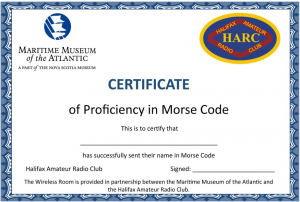
The Wireless Room is staffed several days a month, by volunteers of the Halifax Amateur Radio Club, who conduct live demonstrations of Morse code for visitors. Those who wish may test their own skills by sending their name in Morse code to the volunteer on duty. All who successfully complete the test will receive a handsome certificate that commemorates their achievement.
The equipment on display in the wireless room consists of a vintage 1944 Marconi Model CM-11 receiver and transmitter from a World War II Canadian Naval Vessel. This radio has been completely restored by Fred Archibald (VE1FA), a member of the Halifax Amateur Radio Club, and is fully operational.
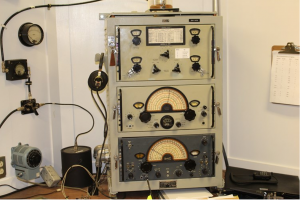
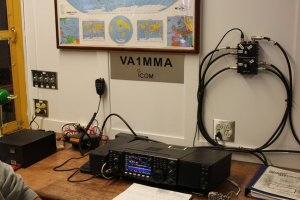
There is also a modern ICOM Amateur Radio Station that is also active using the Amateur radio call sign VA1MMA. This station is capable of communicating worldwide on many frequency bands and many different modes. It uses only a modest antenna mounted on the roof of the museum and the ionosphere to enable communications over great distances, using shortwave frequencies.
Drop by the Wireless Room to view the display, and chat with the HARC volunteers to experiment with Morse code and obtain your souvenir certificate!
